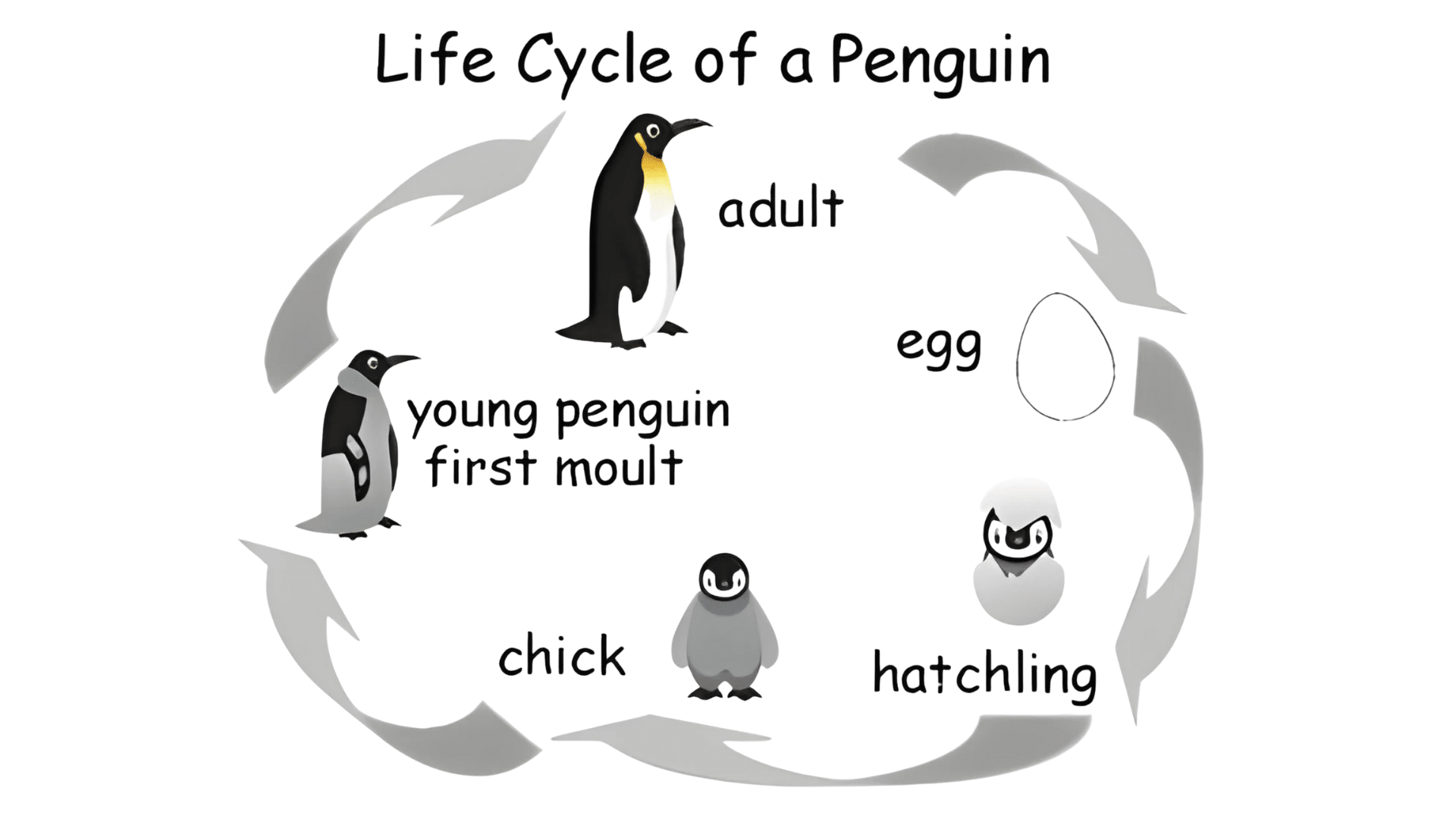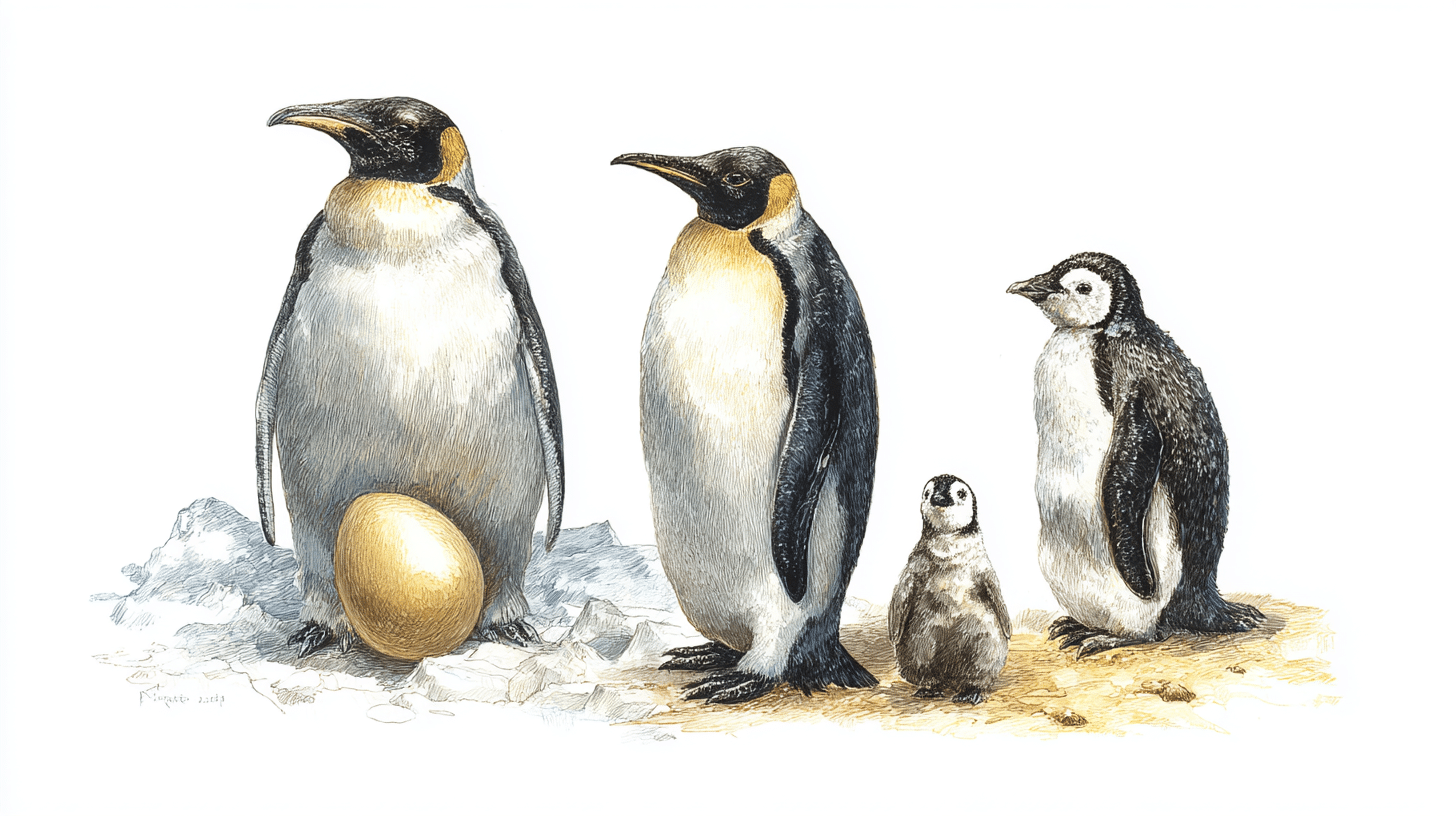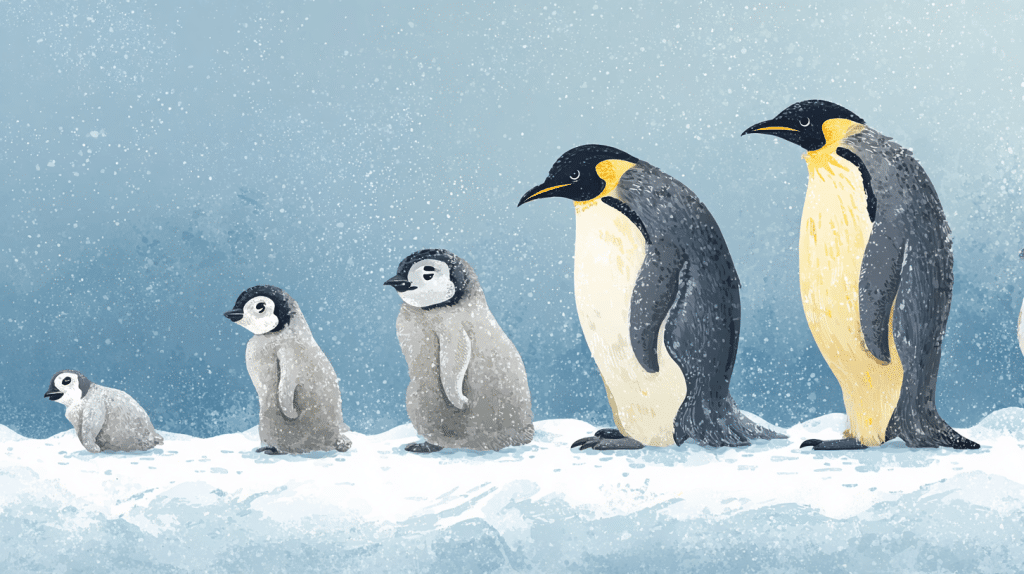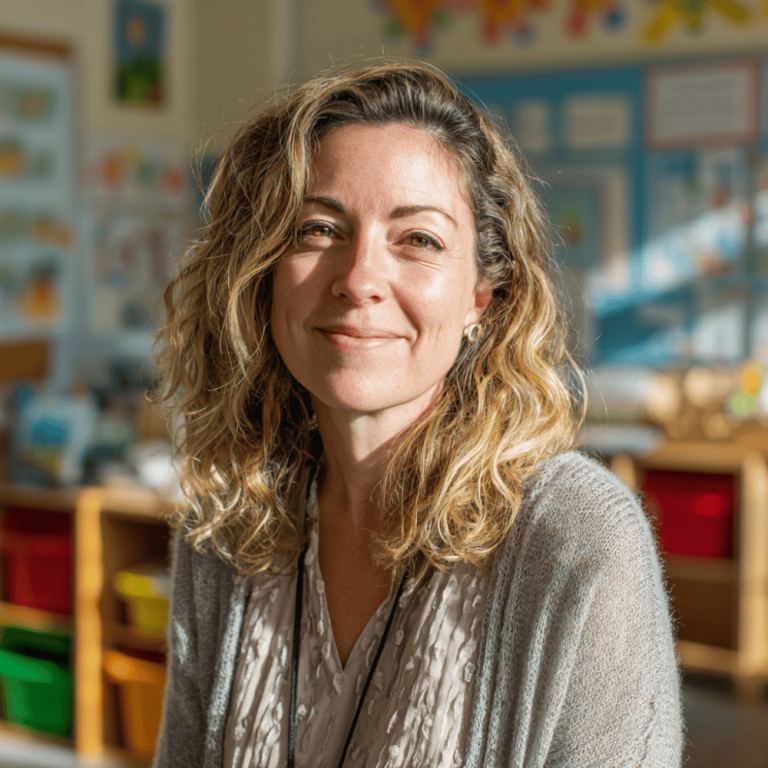Have you ever wondered how a tiny egg turns into a full-grown penguin? The penguin life cycle is one of nature’s most fascinating stories, filled with teamwork, survival, and transformation.
Many people are curious about the stages a penguin goes through, from egg to adult, and how parents care for their chicks in such extreme conditions.
In this blog, you’ll find a clear explanation of the life cycle of a penguin, including each stage, species variations, parenting roles, and survival challenges.
Ready to see how penguins grow and thrive in their unique environments? Let’s take a closer look.
The Penguin Life Cycle: Stages Explained

Penguins are flightless birds that thrive in some of the harshest environments on Earth, making their life cycle especially intriguing.
From a tiny egg to a fluffy chick and eventually a strong adult, each stage shows remarkable survival skills.
With around 17–18 different species, penguins follow the same general life cycle but with unique variations depending on their habitats and behaviors. This diversity makes learning about them both educational and fascinating.
1. Egg Stage
Penguin mothers usually lay one or two eggs, depending on the species. Unlike most birds, penguins don’t build nests but instead keep the eggs warm on their feet, covered by a fold of skin called a brood pouch.
Both parents take turns incubating the egg while the other hunts for food. Incubation lasts about 30–65 days, depending on the species.
In emperor penguins, the father is the one who incubates the egg through the brutal Antarctic winter while the mother is away feeding.
2. Hatchling
Once the egg hatches, a small, down-covered hatchling emerges. At this stage, the chick is extremely fragile, unable to regulate its own temperature or feed itself.
Parents keep it warm and safe inside the brood pouch and feed it regurgitated, partially digested fish or krill.
Hatchlings are vulnerable to cold, predators, and starvation if left unattended too long.
3. Chick
As the hatchling grows, it becomes a chick, still covered in soft, fluffy down feathers. The parents take turns protecting and feeding the chick until it grows stronger.
Chicks may gather in groups called “crèches” for warmth and protection while parents are away.
During this stage, the chick is fully dependent on adults and gradually gains strength and size over several weeks to months.
4. Fledgling (Juvenile)
At this stage, the chick undergoes a molt, shedding its down and growing new, waterproof feathers.
This transformation allows the fledgling to swim and hunt on its own. With waterproof feathers, it can finally go into the ocean to catch fish and begin developing independence.
The fledgling period is a critical survival phase, as young penguins must learn to feed themselves in the wild.
5. Adult
As fledglings mature, they grow into fully developed adults. Adult penguins can live 15–20 years in the wild, with some species reaching up to 30 years in captivity.
Once they reach sexual maturity (around 3–8 years depending on the species), they form breeding pairs and begin the cycle again.
Many penguin species are monogamous within a season, and some, like emperors, form strong bonds with their mate.
Species Variations in the Penguin Life Cycle

Penguins share the same general life cycle stages, but each species shows unique adaptations based on its environment.
| Species | Unique Feature of Life Cycle | Key Notes |
|---|---|---|
| Emperor Penguin | Father incubates egg on his feet through the Antarctic winter | Long incubation (~65 days); extreme cold survival strategy |
| Little Penguin | Shorter life cycle duration | Faster chick development; earliest sexual maturity (around 2–3 years) |
| African Penguin | Specific stage names: egg, hatchling, chick, juvenile, adult | Adapted to warm climates; less extreme incubation needs |
- Emperor penguins live in the harsh Antarctic climate, where the father incubates the egg through extreme cold while the mother hunts.
- Little penguins, the smallest species, have shorter life cycles with quicker incubation and faster chick growth.
- African penguins use slightly different life stage terms: egg, hatchling, chick, juvenile, and adult, and their cycles are adapted to warmer coastal habitats.
Penguin Parenting and Survival
Penguin parenting is a shared responsibility where both the mother and father play important roles. After the female lays the egg, the parents take turns incubating it and later feeding the chick by regurgitating food.
In some species, like emperor penguins, the father carries the main duty of keeping the egg warm while the mother hunts, showing how survival depends on teamwork.
Beyond parenting, penguins rely on survival strategies that increase the chances of their young making it to adulthood.
They often form large colonies that provide safety in numbers, making it harder for predators to single out individuals.
Chicks may gather in groups called crèches for added warmth and protection. Adult penguins also use their agility in water and tight clustering on land to avoid predators, ensuring their species continues to thrive in challenging environments.
Beyond the Life Cycle of a Penguin
Penguins don’t just move through the stages of life; their survival and reproduction are shaped by patterns and challenges beyond the basic cycle.
Lifespan and Breeding Cycles
Most penguins live between 15 and 20 years in the wild, though some species can survive longer, and in captivity, lifespans may extend beyond 30 years.
Breeding often happens annually, with adults returning to the same colonies or nesting sites each year to find mates and raise chicks.
Pair Bonding and Loss of a Mate
Many penguin species are monogamous for a breeding season, and some may reunite with the same partner year after year.
When a mate dies, the surviving penguin will typically bond with a new partner in the next season, though the bond can take time to establish.
Environmental Challenges
Climate change and shifting environments pose serious risks to penguin survival. Melting sea ice, declining fish populations, and harsher weather can reduce food availability and make chick survival more difficult.
These changes impact not only the young but also the ability of adults to maintain successful breeding cycles.
Educational Resources
Learning about the penguin life cycle becomes more engaging when supported by visuals and hands-on activities.
Infographics and diagrams are especially effective, as they let students see each stage at a glance from egg to adult, while helping teachers explain the process clearly.
Creating your own unique visual ensures the material is fresh and easy to follow.
- Printable Worksheets: Worksheets with egg-to-chick cut-outs, labeling exercises, and coloring sheets allow children to interact with the life cycle in a creative way. These activities help reinforce learning while making lessons fun.
- Interactive Ideas: Simple classroom games, like quizzes where students match pictures to each life stage, can boost participation and memory. Digital tools or slide-based activities can also bring the penguin’s life cycle to life, encouraging both independent and group learning.
Conclusion
The penguin life cycle shows us how these amazing birds survive and grow, from a tiny egg to a strong adult ready to raise chicks of their own.
By learning about each stage, you can better understand the challenges penguins face and the unique ways they care for their young.
This blog has walked you through the key steps in the life cycle of a penguin, along with species differences, parenting roles, and survival strategies.
Remember, every stage of the life cycle of a penguin tells a story of resilience.
Frequently Asked Questions
How long do penguins live?
Most penguin species live about 15–20 years in the wild, though some may live longer depending on conditions. Penguins in captivity often live over 30 years because of steady food supplies and fewer predators.
Do all penguin species have the same life cycle?
All penguins follow the same general stages – egg, hatchling, chick, fledgling, and adult – but the timing and details vary. For example, emperor penguins have a longer incubation period than little penguins, whose chicks grow more quickly.
How do penguins care for their young?
Penguin parents work as a team. They take turns keeping the chick warm in a brood pouch and feeding it by regurgitating pre-digested food. In many species, chicks gather in groups called crèches for warmth and safety while parents hunt.











